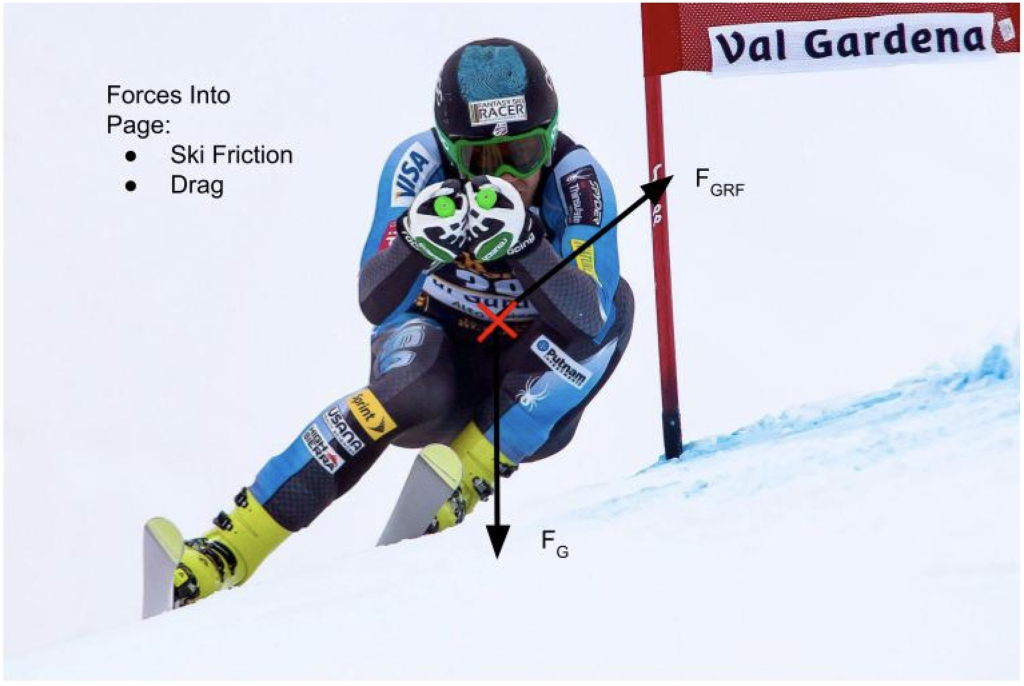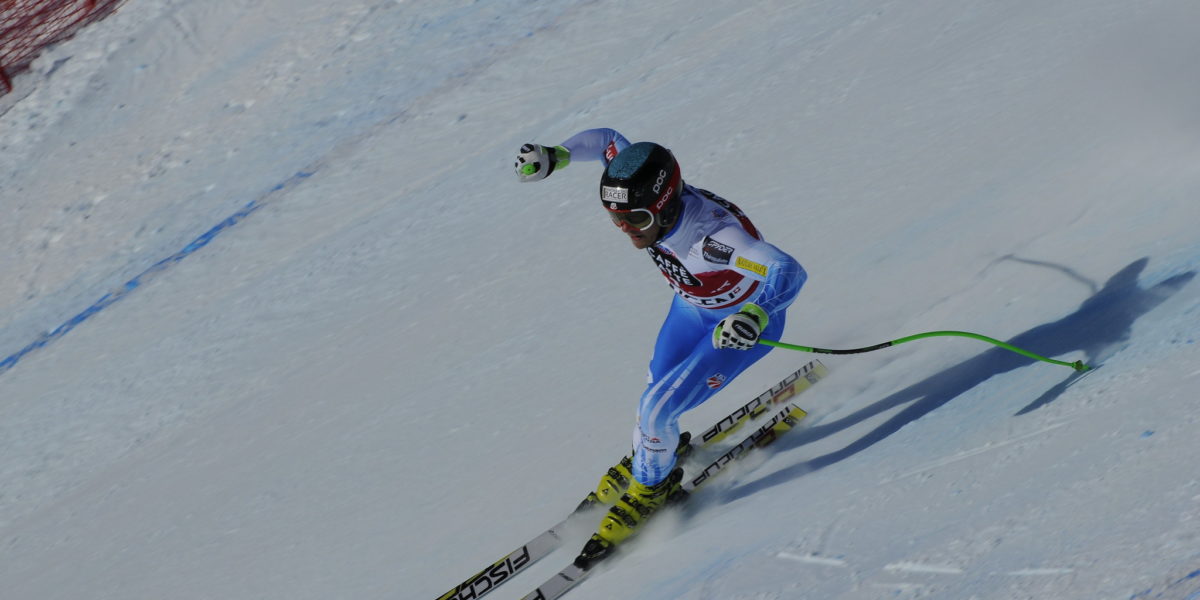Do you ever wonder what differentiates a casual skier from an Olympic level skier? The distinction lies in the immense forces these Olympic skiers’ output as they naturally transition from incredibly high speeds to sharp turns on the icy slopes. The four famous alpine skiing events held at the Winter Olympics are the slalom, giant slalom, downhill, and super-G events. In these events the human body is pushed to its limit with skiers experiencing forces of up to 2000N during turns through closely spaced poles and gates. Which is the equivalent of a 440-pound weight laying on top of you. These forces are integral in achieving faster times, better technique, and winning Olympic gold. How can these forces and techniques be optimized for the best possible ski run?
Let’s explore the turn mechanics and forces experienced by giant slalom skiers. Giant slalom was chosen because it combines the quick turns of slalom and the high speeds of the super-G and downhill events. Therefore, it is an adequate choice for investigation. First, we need to understand the forces experienced by a skier during a turn around a gate, which are displayed.

Skiers experience four basic forces during a turn. They undergo friction forces between the skis and snow and the force of air drag as they blister down the slopes. The force of their body weight due to the constant force of gravity. As well as ground reaction forces (GRFs), which represent the force of the skiers on the ground. These GRFs are highly important as the skier pushes hard against the ground to carve through turns and around the gate.
The most important part of the ski turn is the change of direction. Skiers change their direction by digging into the snow while changing the angle of their skies. This causes variability in their outputted forces. Prior to changing direction, skiers output 500N of GRFs, but as they begin to change angle around each gate they skyrocket to 2000N [1]. This is due to the adjustment of ski angle against the direction of motion. The understanding of these forces can be the difference between Olympic gold and last place.
These forces are important for the success of the skier as well as their safety. Every skier has different approaches towards their turn around a gate, so it is important to gather data to optimize the success of each ski run. Ski equipment also plays a vital role and could influence ski times, as each skier has difference in preferences for their equipment.
Understanding these forces are important for the success of the skier as well as their safety. Every skier has different approaches towards their turn around a gate, so it is important to gather data to optimize the success of each ski run. Ski equipment also plays a vital role and could influence ski times. As each skier has difference in preferences for their equipment. Comprehension of these forces play a huge role in enhancing skier safety. Slipping due to high speeds and improper technique can cause crashes and devastating injuries. The goal of this study is to produce a point of fast ski times where safety, equipment, and technique are optimized. There are many unknowns in the optimization of the perfect ski run. With future study of the alpine skiing, skiers and their equipment will continue to develop and their times will become faster.
Featured image cropped from Alpine Skiing World Cup by martin_vmorris which is licensed under CC BY-SA 2.0.
